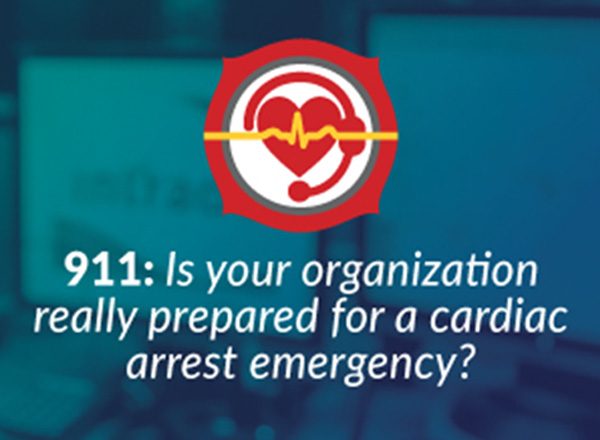Over 350,000 individuals will suffer an out-of-hospital cardiac arrest this year — that’s 900+ people each day. Unfortunately, in the U.S. survival rates are dismal; in some communities, as low as 10%.
On out-of-hospital cardiac arrest calls, telecommunicators own the first 600 seconds of the call. They are the first responders and the first to deliver care by guiding callers through life-saving telephone CPR (T-CPR). But it’s up to each agency to ensure that their telecommunicators’ CPR skills remain strong and competent, rather than merely compliant.
To improve patient care, and ultimately survival, the American Heart Association (AHA) recommends addressing six foundational elements essential to improving survival in your community. Is your call center on the same page?
- Commit to T-CPR. Without receiving bystander CPR, a cardiac arrest victim has virtually zero chance of survival. To help make bystander CPR happen, telecommunicators must be equipped with high-quality T-CPR skills. It’s up to your agency’s leadership to set the expectation and hold staff accountable to make sure T-CPR is always part of the critical life-saving process.
- Provide initial and ongoing training. While cardiac arrest calls account for less than 1% of all calls taken, they are arguably the most critical. According to the AHA, telecommunicators should receive no less than four hours of initial training, as well as a minimum of two hours of continuing education each year relevant to resuscitation and T-CPR.
- Conduct continuous QI. Are all cardiac arrest calls reviewed for adherence to protocols? Are you measuring key time intervals? Auditing and measuring performance is key. An effective QI process should have clear, objective data sets with specific individuals assigned to conduct reviews. At a minimum, data should be aggregated annually to identify challenges and inform training needs.
- Connect to an EMS agency. A strong EMS system must behave as a team to boost survival rates. Look to your EMS providers for critical feedback on cardiac arrest events. Was there a missed opportunity? Did external factors make an impact? EMS reports can fill in the gaps of your call data to create a more complete picture.
- Appoint a designated medical director. To implement high-quality T-CPR, agencies need continuous physician oversight. Medical directors are responsible for establishing guidelines and protocols, and ensuring implementation and liability of your T-CPR program.
- Recognize outstanding performance. From the second a call is answered, everything must align perfectly for a patient to survive an out-of-hospital cardiac arrest. That’s why you should honor survivors and telecommunicators, and also recognize the first responders that do everything right to contribute to a patient’s chance of survival.
A cardiac arrest call is a race against the clock. Every second matters. Empower your telecommunicators to act quickly and correctly, providing high-quality T-CPR instructions and improving the outcome for cardiac arrest victims in your community.
Don’t know where to start? Use RQI’s Pulse Check to see if you're operating within the latest high-performance standards.








